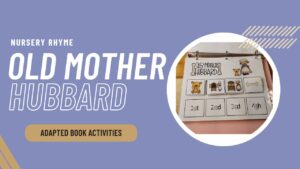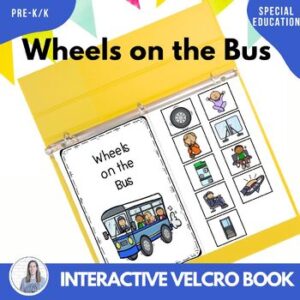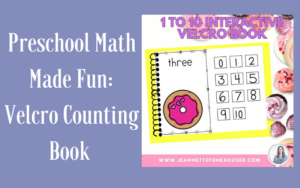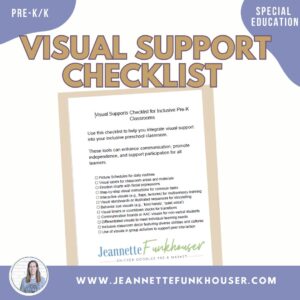In a world where access to reading materials can be limited for individuals with disabilities, adapted books offer a new window of opportunity. These innovative and inclusive resources provide readers of all abilities the chance to engage with literature in a meaningful way. Whether it’s adding tactile elements for those with visual impairments or incorporating sign language for non-verbal individuals, they are breaking down barriers and revolutionizing the reading experience.
Adapted books not only empower readers with disabilities but also foster inclusivity and understanding in society as a whole. By allowing individuals of different abilities to access the same stories, these books create a platform for shared experiences and empathy. They bridge the gap between readers with and without disabilities, nurturing a sense of belonging and promoting diversity.
In this article, we will explore the world of adapted books and the impact they have on readers of all abilities. From their origin and evolution to the benefits they bring, we will dive into the ways in which adapted books are revolutionizing the literary landscape. Get ready to unlock a world of possibilities and discover how they transform the way we read.
What are Adapted Books?
Adapted books offer essential reading materials for individuals with disabilities, providing engaging resources for all abilities. They include tactile elements for those with visual impairments and sign language for non-verbal individuals, breaking down barriers and enhancing the reading experience.
Not only do adapted books empower readers with disabilities, but they also promote inclusivity and empathy in society. By enabling individuals of different abilities to access the same stories, they foster shared experiences and a sense of belonging.
This article explores the impact of adapted books on readers and highlighting their benefits. Adapted books are specially designed to cater to various needs, featuring tactile elements, braille, simplified language, and interactive components. Created collaboratively by educators, therapists, and individuals with disabilities, these books serve as powerful tools for promoting literacy and cognitive development for all.
Benefits to Readers
The benefits extend far beyond simply providing access to reading materials. These specialized resources offer a range of advantages that enhance the reading experience and support the overall development of individuals with disabilities. One of the key benefits is their ability to cater to diverse learning styles and sensory preferences. By incorporating elements such as tactile features, audio cues, and visual supports, adapted books engage multiple senses and facilitate a deeper understanding of the content.
Moreover, they promote independence and autonomy in reading, allowing individuals with disabilities to explore stories and information at their own pace and in a format that suits their needs. This sense of empowerment can boost confidence, motivation, and self-esteem, fostering a positive attitude towards reading and learning. Additionally, adapted books can improve literacy skills, language development, and cognitive abilities by providing opportunities for practice, repetition, and reinforcement of key concepts.
Adapted books promote social inclusion and empathy by reflecting diverse experiences. They create connections among readers of all abilities, helping individuals appreciate differences and develop compassion. Through shared reading, adapted books build bridges between those with and without disabilities, fostering community and belonging.
Types of Adapted Books
Adapted books come in various formats to meet the needs of different readers. Common types include tactile books, interactive books, picture communication symbols (PCS) books, and digital books. Tactile books have textured elements for individuals with visual impairments, featuring raised images, textures, and braille for accessibility.
Interactive books encourage reader participation with movable parts, sound effects, pop-ups, and games that enhance engagement. PCS books use visual symbols to aid those with communication difficulties, helping them convey information through pictures and text.
Digital adapted books utilize technology for customizable reading experiences on devices like tablets and computers. They offer features such as audio narration, text highlighting, adjustable font sizes, and interactive elements, blending traditional reading with digital accessibility.
Promote Inclusive Education
Inclusive education aims to provide equal learning opportunities for all students, regardless of abilities. Adapted books are vital for promoting this by ensuring individuals with disabilities access the same educational resources as their peers. By accommodating diverse needs, educators create a more inclusive learning environment.
Adapted books eliminate barriers to learning, enabling individuals with disabilities to engage fully in classroom activities and develop literacy and communication skills. They support differentiated instruction and personalized learning, fostering a more inclusive educational setting.
Additionally, they promote diversity, empathy, and understanding by exposing students to various perspectives and abilities. Incorporating adapted books into lessons helps students appreciate differences, develop empathy, and build a more accepting community, celebrating each individual’s unique strengths.
Creating Adapted Books
Creating adapted books requires careful planning, creativity, and attention to the specific needs of the target audience. Whether you are a teacher, therapist, parent, or caregiver, here are some tips to help you create effective and engaging books for individuals with disabilities:
- Understand the Needs: Begin by identifying the specific needs and preferences of the reader, including their sensory preferences, communication abilities, and learning styles. Tailor the adaptations to suit the individual requirements of the reader to ensure that the book is accessible and engaging.
- Use Multisensory Elements: Incorporate a variety of sensory elements such as textures, sounds, scents, and visual cues to engage multiple senses and enhance the reading experience. Consider using tactile materials, audio recordings, interactive features, and visual supports to make the content more interactive and meaningful.
- Simplify Language: Use clear and simple language that is easy to understand and accessible to individuals with varying levels of language proficiency. Avoid complex vocabulary, long sentences, and abstract concepts that may be challenging for readers with cognitive or language difficulties.
- Provide Supportive Tools: Offer additional supports such as communication boards, visual schedules, and assistive technology devices to help individuals with disabilities access and engage with the adapted book. Consider using adaptive tools and strategies that cater to the specific needs of the reader.
- Encourage Participation: Create opportunities for active participation and engagement by incorporating interactive elements, questions, and prompts that encourage readers to interact with the content. Encourage individuals to explore, respond, and engage with the book in a way that is meaningful and enjoyable.
By following these tips you can create adapted books that are engaging and accessible for individuals with disabilities. Remember to involve the reader in the process, and make adjustments based on their responses to ensure that the adapted book enhances their reading experience.
Supporting Language Development
Adapted books are valuable tools for supporting language and literacy development in individuals with disabilities. These specialized resources provide a structured and engaging way to introduce and reinforce key language concepts, vocabulary, and communication skills. By adapting books to specific needs of the reader, educators can create learning opportunities that promote language acquisition, literacy skills, and cognitive development.
One of the key benefits for language and literacy development is their ability to provide a visual and tactile context for learning. By incorporating visual supports, tactile elements, and interactive features, adapted books help individuals make connections between words, images, and concepts, enhancing their retention of information. This multisensory approach to learning can be beneficial for individuals with communication difficulties, language delays, or sensory processing challenges.
Additionally, adapted books offer opportunities for repeated practice, reinforcement, and extension of language skills. Adapted books present information clearly, helping individuals build vocabulary, improve comprehension, and develop communication skills. Interactive activities and prompts encourage engagement, expression, and meaningful literacy experiences that foster language development.
Moreover, adapted books can be used to target specific language goals and objectives, such as expanding vocabulary, improving sentence structure, enhancing storytelling skills, and developing comprehension strategies. Educators can tailor books to meet individual learning goals helping individuals with disabilities improve language skills, build confidence, and foster a love for reading.
Incorporating Adapted Books
Adapted books are versatile tools for therapy with individuals of all ages and abilities. Therapists, including speech-language pathologists and occupational therapists, can use them to support various therapeutic goals. These resources creatively target communication, sensory, motor, cognitive, and social-emotional skills.
A key benefit is their ability to provide a structured, motivating context for practicing skills. By choosing books aligned with therapy objectives, therapists can create meaningful activities that expressive language or fine motor skills.
Adapted books also facilitate communication and engagement during sessions. Interactive elements and visual supports enhance self-expression and rapport, while promoting positive interactions.
They can aid sensory integration and motor skills in those with sensory processing challenges. Incorporating tactile materials and movement activities allows individuals to engage their senses and develop foundational skills in a supportive environment. Overall, adapted books offer a multisensory approach that boosts engagement and progress toward therapeutic goals.

Empowering Readers
Adapted books are more than reading materials; they are gateways to opportunities and empowerment for individuals of all abilities. They cater to diverse needs, allowing educators, therapists, and caregivers to create inclusive reading experiences. These books advocate for inclusion and diversity in literature.
As we explore the impact of books, we discover stories that are bridging gaps between readers with and without disabilities. This fosters community, understanding, and empathy, enriching the reading experience for everyone. By embracing adapted books for empowerment, we move toward a more accessible world where everyone can read, learn, and thrive.











